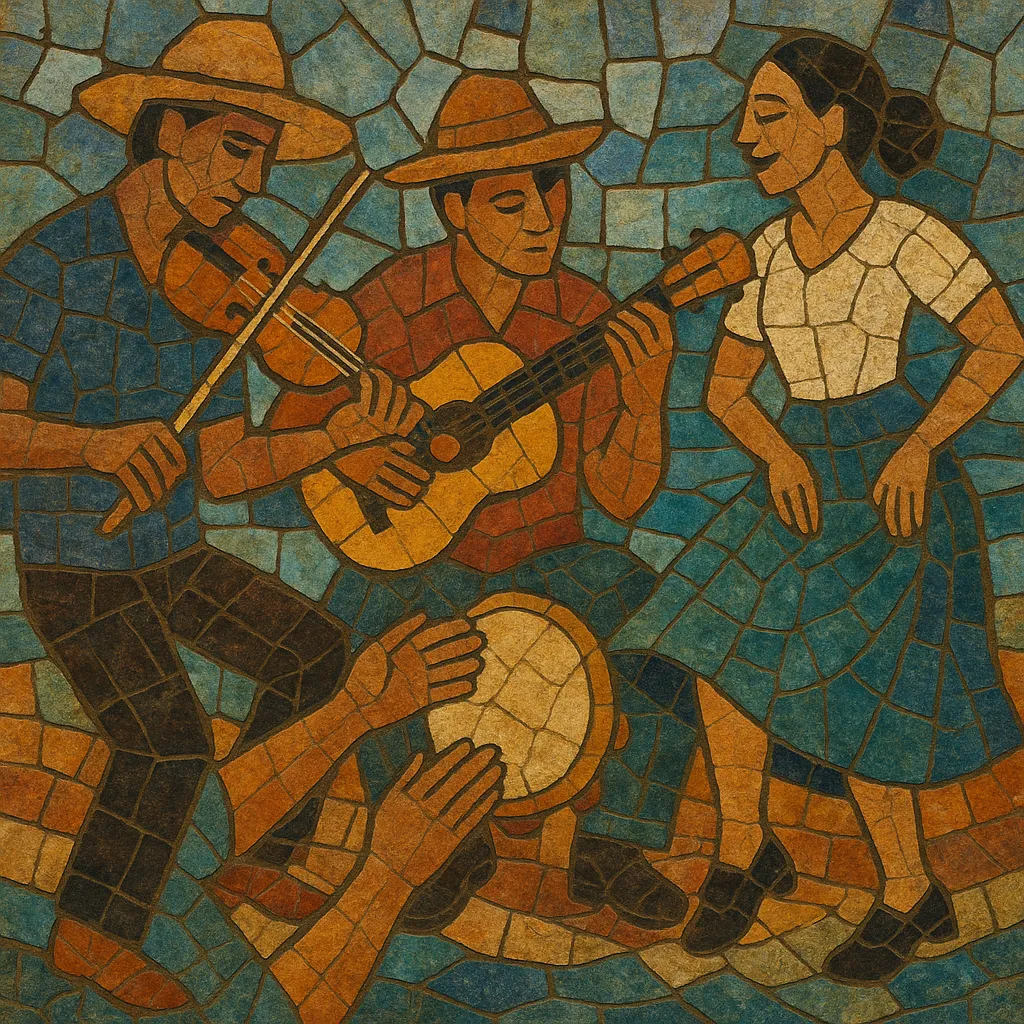Fandango caiçara is a traditional music-and-dance practice from Brazil’s southeastern coastal communities known as caiçaras, especially along the coasts of Paraná and São Paulo.
It combines lively string-led music (viola caipira and rabeca) with percussive footwork produced by wooden clogs (tamancos) and hand percussion (such as pandeiro and adufe). Songs are often sung in call-and-response, with simple, memorable refrains and lyrics that narrate daily coastal life—fishing, the sea, festivities, and devotion to local saints.
As a social practice, it is performed at community gatherings, patron-saint festivities, and life-cycle celebrations, where music, dance, craft (instrument making), and cuisine are intertwined.
Fandango caiçara took shape in Brazil during the 1800s within coastal caiçara communities formed by the intermixing of Indigenous peoples, Portuguese settlers, and Afro-descendant populations. The Iberian fandango dance tradition (brought by the Portuguese and with parallels in Spain) provided a core couple-dance framework, while Afro-Brazilian rhythms and Indigenous cultural practices shaped the repertoire, instruments, and performance context.
By the 19th century, ensembles commonly featured the viola caipira (10-string guitar) carrying harmony and rhythm, the rabeca (a rustic fiddle) handling melodic lines, and percussive layers created both by handheld instruments (pandeiro, adufe, ganzá) and the dancers’ wooden clogs (tamancos) striking the floor. Repertoires include various marcas (dance types) and sung forms, with lyrics referencing fishing cycles, maritime landscapes, and religious devotion.
Urbanization, migration, and mass media in the mid-20th century reduced the transmission of fandango caiçara. Nevertheless, local masters (mestres) and community groups preserved the practice through informal teaching, community festas, and the making of instruments. From the late 20th century onward, cultural associations, researchers, and municipal initiatives helped revitalize the form, encouraging youth participation and documentation.
In the 2000s and 2010s, public recognition grew. Brazil’s IPHAN (Instituto do Patrimônio Histórico e Artístico Nacional) registered Fandango Caiçara as part of Brazil’s intangible cultural heritage in 2012, supporting safeguarding plans that prioritize intergenerational learning, performance spaces, and luthier knowledge.
Fandango caiçara remains a living, community-centered tradition. It is taught in workshops, schools, and community houses; performed at festivals and local festas; and documented in recordings and research. While rooted in locality, it increasingly appears on national cultural stages as a symbol of Brazil’s diverse coastal heritage.


